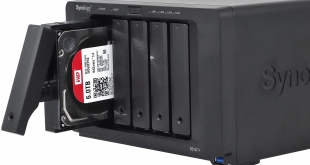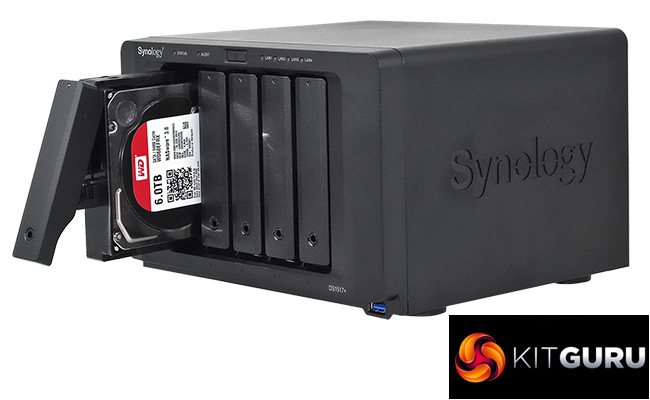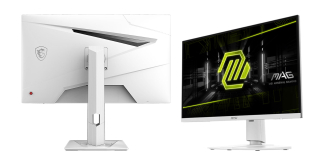
The last member of Synology's DiskStation Plus series of NAS drives we looked at was the 4-bay DS916+. This time we have the more business orientated DiskStation DS1517+, a quad core powered 5-bay NAS which has been designed to handle data intensive tasks such as on-the-fly encryption in the Workgroup & SMD market segments.
Synology's Plus series of NAS incorporates 2-bay to 12-bay desktop tower designs as well as 4-bay and 12-bay rack mounted units.
At the heart of the DS1517+ is an Intel Atom C2538 CPU running at 2.4GHz. The C2538 is a 22nm quad core processor with 2MB of cache and a TDP of 15W. Memory wise the DS1517+ comes pre-installed with either 2GB or 8GB of DDR3 and it was the latter version that Synology supplied for this review. Should you require more memory, the DS1517+ supports up to 16GB of memory via two SO-DIMM slots. There also four Gigabit Ethernet Ports that support Link Aggregation for faster network connections and failure protection.
Synology has also built in a degree of future proofing into the DS1517+ in the shape of a PCIe slot. This Gen 2 x8 slot (x4 link speed) PCIe slot currently supports Synology's M2D17 dual M.2 SATA adapter card or a 10GbE NIC.
Specifications
- Intel Atom 2.4GHz CPU
- 8GB Memory.
- AES-NI hardware-accelerated encryption.
- PCIe slot.
- 4 Gigabit Ethernet Ports.
 KitGuru KitGuru.net – Tech News | Hardware News | Hardware Reviews | IOS | Mobile | Gaming | Graphics Cards
KitGuru KitGuru.net – Tech News | Hardware News | Hardware Reviews | IOS | Mobile | Gaming | Graphics Cards




Somehow the benchmark results do not make a lot of sense to me ie looking at the throughput benchmarks most of them hover around 100 MB/sec despite the different RAID set-ups ie one would expect for example a noticeable difference between RAID-0 and RAID-5….
My guess is that you connected the NAS and/or workstation via a standard 1 Gigabit Ethernet to the Network and therefore the LAN became the bottleneck at around 100 MB/sec ie 1 Gigabit …
In a 10 Gigabit LAN with 5 HDs installed I would expect that you should get close to 400 – 500 Megybytes/sec (at least thats my experience with Synology although I am not familiar with this specific model, so there might be otehr bottleneckes in the specific set-up, also 10 Gigabit needs a little bit of tuning until you get good throughput).